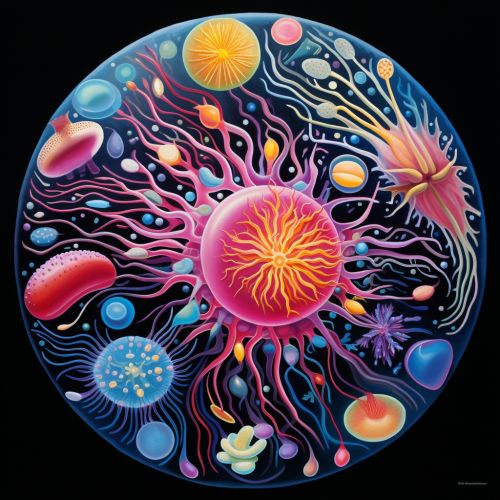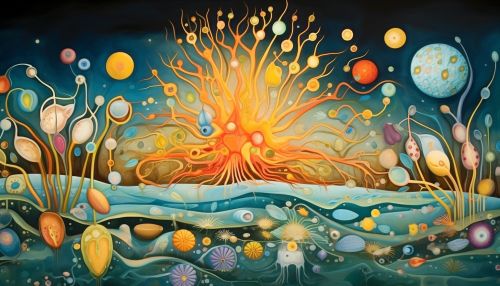Cell organelle
Introduction
Cell organelles are specialized structures within the cell that perform specific functions necessary for the cell's survival. They are found in both eukaryotic and prokaryotic cells, although the types and complexity of organelles present vary between these two types of cells. This article will delve into the nature, structure, and function of various cell organelles, providing a comprehensive understanding of their role in cellular biology.
Eukaryotic Cell Organelles
Eukaryotic cells, which include animal, plant, and fungal cells, contain a variety of organelles, each with its own unique function.
Nucleus
The nucleus is often considered the control center of the cell. It contains the cell's genetic material, or DNA, which is organized into chromosomes. The nucleus is surrounded by a double membrane known as the nuclear envelope, which protects the DNA and controls the flow of substances in and out of the nucleus.
Mitochondria
Mitochondria are often referred to as the powerhouses of the cell. They are responsible for producing adenosine triphosphate (ATP), the cell's main source of energy. Mitochondria have their own DNA and can replicate independently of the cell, a characteristic that has led to the endosymbiotic theory of their origin.
Endoplasmic Reticulum
The endoplasmic reticulum (ER) is a network of tubules and sacs that plays a role in protein synthesis and lipid metabolism. The ER is divided into two types: rough ER, which is studded with ribosomes and involved in protein synthesis, and smooth ER, which is involved in lipid synthesis and detoxification processes.
Golgi Apparatus
The Golgi apparatus is involved in the modification, sorting, and packaging of proteins for transport to their final destinations. It is made up of a series of flattened sacs, or cisternae, and is closely associated with the endoplasmic reticulum.
Lysosomes
Lysosomes are organelles that contain digestive enzymes. They break down waste materials and cellular debris, which can then be recycled by the cell. Lysosomes are particularly abundant in animal cells.
Peroxisomes
Peroxisomes are small organelles that contain enzymes involved in a variety of metabolic reactions, including the breakdown of fatty acids and the detoxification of harmful substances.
Chloroplasts
Chloroplasts are found in plant and algae cells and are responsible for photosynthesis. Like mitochondria, they have their own DNA and can replicate independently.


Prokaryotic Cell Organelles
Prokaryotic cells, which include bacteria and archaea, lack a nucleus and other membrane-bound organelles. However, they do contain some structures that function similarly to organelles.
Nucleoid
The nucleoid is a region within the prokaryotic cell that contains its DNA. Unlike the nucleus in a eukaryotic cell, the nucleoid is not surrounded by a membrane.
Ribosomes
Ribosomes are found in all types of cells and are responsible for protein synthesis. In prokaryotic cells, ribosomes are smaller than those in eukaryotic cells.
Plasmids
Plasmids are small, circular pieces of DNA that are separate from the chromosomal DNA. They can replicate independently and can be transferred between cells, providing a means for genetic exchange.
Mesosomes
Mesosomes are infoldings of the plasma membrane in prokaryotic cells. They are involved in a variety of cellular processes, including DNA replication, cell division, and respiration.
Conclusion
Cell organelles are integral to the function and survival of cells. They carry out a wide range of tasks, from energy production to waste disposal, and their structure and function are finely tuned to these tasks. Understanding the nature of cell organelles is fundamental to the study of cell biology and to our broader understanding of life at the cellular level.
